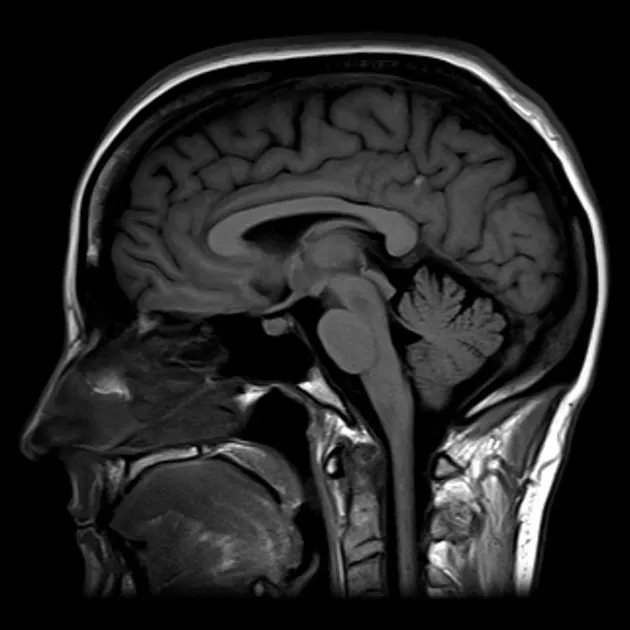How to Interpret Brain MRIs: 3 Essential Techniques
Introduction
Interpreting brain MRIs is crucial for diagnosing a range of neurological conditions, offering detailed images of brain structures. This guide will familiarize readers with brain MRIs and introduce three essential techniques for their interpretation.
Understanding Brain MRIs
A brain MRI is a diagnostic imaging test focused on the brain, providing detailed images of brain tissues. This section explains what brain MRIs are and their common uses.

What Do Brain MRIs Show?
- Brain Structure Analysis: Examines the anatomy of the brain, assessing areas such as the cerebral cortex and ventricles.
- Pathological Changes: Identifies changes related to diseases like Alzheimer’s, stroke, and tumors.
- Injury Assessment: Evaluates brain injuries and their implications.
- Disease Progression: Monitors disease progression in neurological disorders.
When Will You Get One?
- Symptoms Investigation: For symptoms like persistent headaches, seizures, or cognitive changes.
- Disease Monitoring: Regular monitoring of progressive neurological diseases.
- Pre-surgical Planning: Detailed brain mapping before neurological surgeries.
- Research and Study: In clinical studies or research settings.
Techniques to Interpret Brain MRIs
Interpreting brain MRIs requires understanding of neurological anatomy and pathology. Here we explore three techniques tailored to different expertise levels and needs.
1. Utilizing X-ray Interpreter
X-ray Interpreter offers reliable AI-driven analysis of brain MRIs. The process is straightforward:
- Registration: Register on X-ray Interpreter for AI analysis access.
- Uploading MRIs: Upload your brain MRI images to the platform.
- Reviewing Interpretation: Get the AI-generated interpretation and download the report.
- Professional Consultation: Consult medical professionals for a deeper understanding of the results.
Please check out our get started guide.
2. Using ChatGPT Plus
ChatGPT Plus can also analyze brain MRI images, providing detailed and interactive analysis:
- Subscription: Subscribe to ChatGPT Plus for GPT-4V image analysis access.
- Uploading MRIs: Use the GPT-4V interface on OpenAI to upload brain MRI images.
- Requesting Analysis: Input commands or questions for analysis.
- Review and Confirmation: Evaluate the provided analysis, iterate for specifics if needed.
- Professional Validation: Consult medical experts to validate GPT-4V's analysis.
Learn more by reading our post on using ChatGPT Plus for MRI interpretation.
Alternatively, as several other AI models with vision capabilities emerge, you can also try other models, such as Grok by xAI, Claude by Anthropic, Gemini by Google Deepmind.
3. Reading Brain MRIs Yourself
Self-reading is best for healthcare professionals seeking to enhance their diagnostic skills in neurology:
- Education: Gain knowledge and training in brain MRI interpretation.
- Practice: Regularly practice under expert supervision.
- Resources: Use books, online materials, and medical literature for skill enhancement.
- Feedback: Seek professional feedback for improvement.
- Continuous Learning: Stay updated with recent developments and attend relevant workshops.
Recommended Resources for Self-Reading:
-
How to read an MRI of the brain | First Look MRI: A YouTube video that provides an introduction to reading MRIs of the brain, offering insights into basic interpretation techniques.
-
Introduction to MRI of the brain: This video serves as a beginner's guide to understanding brain MRIs, discussing key imaging features and their clinical relevance.
-
Magnetic Resonance Imaging (MRI) Procedures | RadiologyInfo.org: This resource provides comprehensive information about MRI technology, discussing the various procedures and safety guidelines involved, which can greatly benefit both patients and medical professionals looking to understand the intricacies of MRI scans.
Conclusion
Brain MRI interpretation is key in neurology. This guide presents three techniques—using X-ray Interpreter, ChatGPT Plus, and self-reading—each catering to different needs and expertise levels. Choose the method that best fits your requirements and resources, and ensure you adhere to ethical standards for patient care.
Related Articles
- How To Interpret Skull X-rays
- How To Interpret Head CT scans
- Get a Free Brain MRI Second Opinion Online
Resources and Further Learning
For further exploration and understanding of brain MRI interpretation, consider the following resources:
- Brain MRI: What It Is, Purpose, Procedure & Results | Cleveland Clinic: Provides detailed information about brain MRI procedures, including what to expect during the test and how it helps diagnose various conditions.
- MRI of the Brain | RadiologyInfo.org: Offers comprehensive details on brain MRI imaging, including how the test is performed and its role in diagnosing brain diseases.
- Head MRI | Healthline: Discusses the uses, process, and importance of brain MRIs in medical diagnosis and monitoring, including potential side effects and what results can indicate.
These resources provide valuable information for both general knowledge and deepening professional understanding of brain MRI technology and its applications.